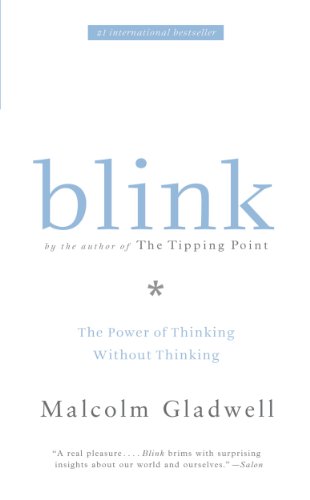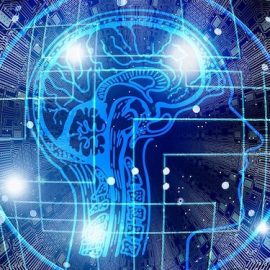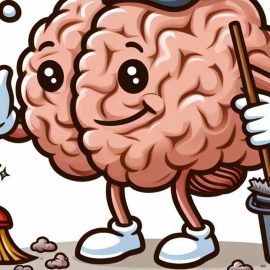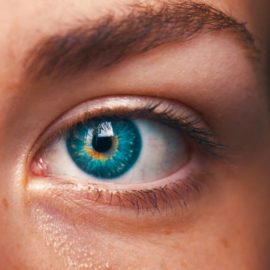

This article is an excerpt from the Shortform summary of "Blink" by Malcolm Gladwell. Shortform has the world's best summaries of books you should be reading.
Like this article? Sign up for a free trial here .
Do you ever get overwhelmed when trying to make a decision? Do you find that the more information you have, the harder the decision-making process becomes? How does thin-slicing help you make better decisions in the blink of an eye?
In thin-slicing, your brain trusts your gut, and this may be the smartest thing you can do when making tough decisions. Learn how to use the concept of “thin-slicing” to make the smartest decision, big or small.
What is Thin-Slicing?
Thin-slicing is the process by which our unconscious minds find patterns in situations based on thin slices of experience. Psychologists use the idea of “thin-slicing” to explain how our unconscious minds can be so efficient at making snap judgments.
Our unconscious minds are frugal. They don’t need a lot of information to make a decision. When we thin-slice, our unconscious picks out the information that is relevant and leaves the rest.
Here, the unconscious mind has the advantage over the conscious one. The conscious mind isn’t as good at parsing information. It gets bogged down by details that are distracting, overwhelming, irrelevant, and misleading. Additionally, it picks through this information slowly, and sometimes makes decisions based on information that’s not even relevant. In contrast, the unconscious mind can assess available information in seconds and zero in on the most pertinent details.
We all thin-slice, all the time. But we can make our thin-slicing even more reliable and efficient.
Psychologist John Gottman and his “love lab” provide a good analogy for what’s happening in our brains when we thin-slice.
The Love Lab
Since the 1980s, more than 3,000 married couples have taken part in Gottman’s research at the University of Washington. His overall goal is to understand what makes relationships healthy. The goal of this particular study is to show that, if you know how to “thin-slice” a marriage—that is, if you know which information is relevant and which isn’t—you can accurately predict the future of a marriage.
Gottman and his researchers videotape couples having a “meaningful interaction.” This could be discussing a point of contention or talking about how they met.
Coding Emotions: An Analogy for Thin-Slicing
Additionally, Gottman trains all his researchers to read subjects’ emotions based on fleeting facial expressions and seemingly trivial dialogue. Each emotion has its own numerical code, and when they watch the videos, researchers assign a code to each second of the conversation. For example, disgust is coded with the number 1, contempt is 2, and whining is 11.
To the layman, a couple may seem to be happily having an innocuous conversation. But their veiled expressions and word choices may say otherwise. Through their second-by-second coding, trained researchers pick up on subtle facial and verbal cues that otherwise go unnoticed. Gottman uses this coding system, combined with data from the sensors, to assess the current health of a relationship and predict its future.
Results
Gottman can analyze an hour-long conversation and predict with 95% accuracy whether or not the couple will still be married in 15 years. He can analyze 15 minutes of the conversation and predict with 90% accuracy who will remain married. Even more impressive, one of Gottman’s colleagues can watch only 3 minutes of a couple’s conversation and accurately predict whether or not they will stay married
How Gottman’s Work in the “Love Lab” is Like Thin-Slicing
What does this have to do with thin-slicing? The “love lab” example doesn’t show thin-slicing at work, but serves as an analogy.
Thin-slicing takes place in the unconscious mind. Conversely, Gottman and his researchers arrive at their predictions through a very deliberate, conscious method. They use a lot of data to make their predictions. They’re not guessing.
But Gottman’s love lab research provides a great model for what’s happening in our brains when we thin-slice. Our brains do a quick and unconscious version of what Gottman does when he consciously analyzes his data.
Gottman’s work provides two important takeaways that help us understand how the unconscious mind works when it thin-slices:
Lesson #1: The Process of Thin-Slicing Identifies Patterns
These are patterns, or “signatures,” that the conscious mind doesn’t pick up. The unconscious mind makes decisions based on these patterns.
Similarly, predicting divorce involves identifying the patterns of unhealthy relationships. Gottman’s work demonstrates that all marriages have a “marital DNA” that underlies all of the couple’s meaningful interactions. It wouldn’t take Gottman’s team long to identify what your relationship’s pattern is. Maybe you repeatedly ask for credit, and your spouse repeatedly withholds it. Maybe whenever you and your partner have a disagreement, no matter how minor, your partner is inflexible. If these types of interactions show up regularly in a span of 15 minutes, they’re probably part of your marital DNA.
Gottman and his team “thin-slice” a marriage by looking at a narrow sliver of it—one hour of conversation, or even 15 minutes—and finding the pattern. Then they make an inference about the entire marriage.
Like Gottman’s team, the unconscious mind takes a thin slice of experience and quickly recognizes patterns in it. It then makes an inference about a current situation based on the patterns of similar experiences in the past.
Lesson #2: The Process of Thin-Slicing is Frugal
The unconscious mind doesn’t need a lot of information to do its job.
Gottman’s work demonstrates the benefits of frugality when making a decision. Too much information can overwhelm our decision-making abilities. Gottman has found that we don’t need to pay attention to every emotion when predicting the success of a marriage. We can narrow our focus. Thin-slicing works similarly, swiftly prioritizing information and zeroing in on the most important factors.
Study: Less Information Leads to More Accurate Predictions
Gottman’s researchers gave some of his 3-minute clips to marriage counselors, psychology students, marital researchers, and others who knew a lot about marriage. Even though they were experts, they were only able to predict divorces about 54% of the time, which is not much better than chance. Why did they have so much trouble?
The videos showed the marital patterns of each couple, but the marriage counselors and other specialists had a hard time picking them out because the videos contained so many red herrings. Individuals may express dozens of subtle emotions in a span of three minutes. Such a large amount of information is overwhelming. How do you know what’s important?
When you narrow your focus to just four problematic emotions and attitudes (defensiveness, stonewalling, criticism, and contempt), you can disregard the other data points and still make an accurate prediction about the health of a marriage.
You can further narrow your focus to a single emotion, contempt, and still predict a marriage’s future pretty accurately. If you detect contempt in a 3-minute clip, you don’t need to know anything else about a couple’s relationship to know if it’s in trouble. It is.
The way Gottman zeroes in on the most important pieces of information is similar to what our unconscious minds do when they thin-slice. The unconscious lasers in on the most significant details and disregards the rest. Consequently, thin-slicing allows for speedy decision-making, since it doesn’t involve processing a lot of information.
Now that we have a better sense of what our brain does when it thin-slices, let’s look at a study that shows the accuracy of thin-slicing in judging people’s personalities.
Thin-Slicing: Judging a Person By His College Dorm Room
Psychologist Samuel Gosling wanted to know how accurate our intuitive judgments are when it comes to judging strangers. How well can we thin-slice people?
First, Gosling asked 80 college students to fill out the Big Five Inventory, a respected questionnaire that measures five personality traits: extraversion, agreeableness, conscientiousness, emotional stability, and openness to new experiences.
Then, Gosling asked the close friends of those 80 students to rank them on the Big Five. Gosling compared the questionnaires of the subjects with their friends’ rankings. Unsurprisingly, the friends showed that they knew the subjects pretty well. Each friend had a “thick slice” of experience with the subject, having spent a lot of time with him or her, and could judge the subject’s personality accurately.
Finally, Gosling sent someone who had never met the subject into the subject’s dorm room for 15 minutes. Gosling asked the stranger to assess the subject according to the five personality traits just by looking at that person’s bedroom. This is the process of thin-slicing: using a limited amount of information to make a quick, unconscious decision.
Results of Thin-Slicing
Gosling discovered that you can make a surprisingly accurate judgment about someone you’ve never met, just by looking around his or her dorm room for 15 minutes. This is the power of thin-slicing.
Friends, as expected, were more accurate in rating extraversion and agreeableness. However, strangers, who had to thin-slice, were more accurate in rating conscientiousness, emotional stability, and openness to new experiences.
Why? Bedrooms expose patterns. They give a peek into your private life that is revealing. Dirty laundry on the floor, an alphabetized CD collection, or a scented candle on the desk can tell you just as much about a person as meeting him or her, if not more.
A bedroom, without its occupant in it, is frugal. It excludes distracting and irrelevant information. Stereotypes triggered by a subject’s presence were absent. If you meet a 275-pound lineman, it’s hard to believe he could enjoy intellectual pursuits. If you judge him by the books in his bedroom, you get a different picture. The people themselves weren’t there to get in the way. We can’t view ourselves objectively, so we often say confusing or contradictory things about ourselves to other people. By just looking at someone’s bedroom, we avoid this white noise.
Strangers observing an extremely thin slice of a person’s life can make accurate judgments about that person’s personality. As this example shows, sometimes, it’s better to have a limited amount of information rather than a lot, as long as that information makes use of a pattern from which to extrapolate to the whole. Thin-slicing helps us make the best decision with limited, but relevant, information.
———End of Preview———

Like what you just read? Read the rest of the world's best summary of "Blink" at Shortform . Learn the book's critical concepts in 20 minutes or less .
Here's what you'll find in our full Blink summary :
- How you can tell if a marriage will fail, within 3 minutes
- Why your first impressions are usually surprisingly accurate
- The dark side to making first impressions, and how to avoid the,






